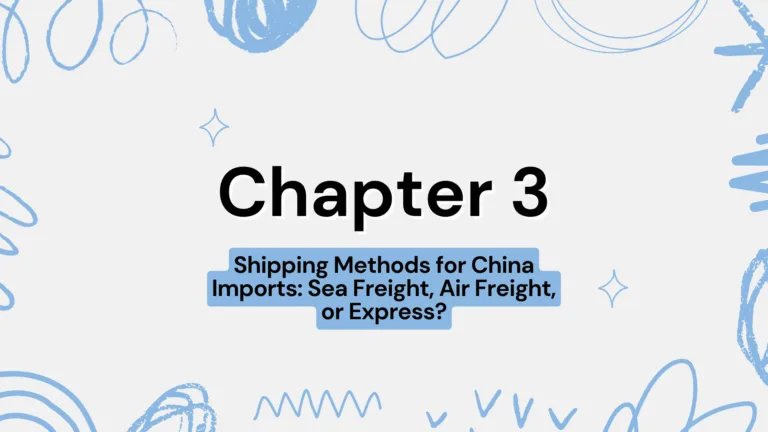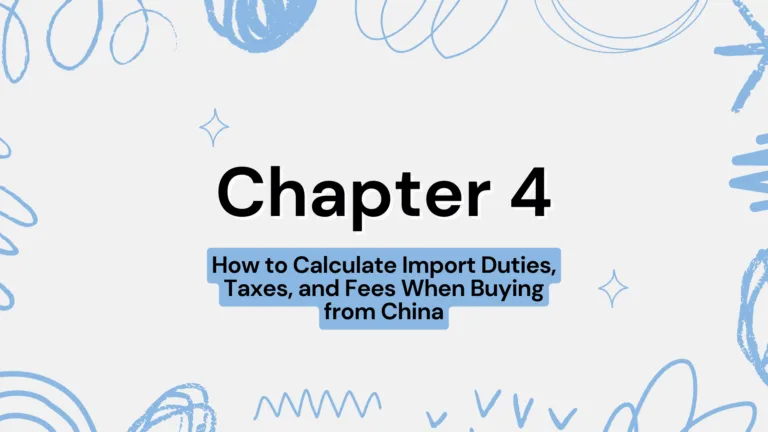Importing goods from China can be highly profitable, but only if you understand the paperwork involved. Missing or incorrect documentation can cause delays, extra fees, or even the seizure of your shipment. To ensure smooth customs clearance, it’s critical to know which documents and certificates you need to import from China.
In this guide, we’ll cover the 7 essential documents required to import from China, explain why each is important, and provide tips to avoid common mistakes.
Quick Comparison Table: Documents Required to Import from China
| Document / Certificate | Purpose | Mandatory or Optional |
|---|---|---|
| Bill of Lading (B/L) | Proof of ownership & contract of carriage | Mandatory |
| Commercial Invoice | Used for duty & tax calculation | Mandatory |
| Packing List | Itemized shipment details | Mandatory |
| Certificate of Origin (C/O) | Confirms goods were made in China | Often mandatory |
| Import Licenses/Certificates | Product-specific compliance (e.g., FDA, CE) | Product-dependent |
| Insurance Certificate | Shipment protection against loss/damage | Optional but recommended |
| Customs Declaration Form | Declares goods to customs authorities | Mandatory |
1. Bill of Lading (B/L)
The Bill of Lading is one of the most important shipping documents. It serves as:
- A receipt for your goods
- A contract of carriage between shipper and carrier
- Proof of ownership
Whether you’re using sea freight or air freight, the B/L is required for customs clearance. Ensure all details—such as product description, quantity, and consignee—are correct.
2. Commercial Invoice
The Commercial Invoice outlines the details of your transaction, including:
- Seller and buyer information
- Product descriptions
- Quantity and unit price
- Total value of shipment
This document is essential for customs authorities to calculate import duties and taxes. Any discrepancies can trigger delays or penalties.
3. Packing List
A Packing List provides a breakdown of what’s inside each package. It includes:
- Item descriptions
- Weight and dimensions
- Package numbers and marks
While it may seem like a simple document, customs officers often use it to cross-check your shipment.
4. Certificate of Origin (C/O)
The Certificate of Origin confirms that your goods were manufactured in China. Many countries require this to determine:
- Eligibility for reduced tariffs under trade agreements
- Compliance with local import regulations
If your country has a free trade agreement with China, presenting a valid C/O could save you money on duties.
5. Import Licenses and Certificates
Depending on your product, you may need special import licenses or certificates. Examples include:
- Food safety certificates (for consumables)
- CE marking (for electronics in the EU)
- FDA approval (for medical products in the U.S.)
Failing to secure the right certifications can lead to shipment rejection. Always check with your country’s customs authority before importing.
6. Insurance Certificate
An Insurance Certificate protects your shipment against loss or damage during transit. While not always mandatory, it’s highly recommended. Some carriers and customs authorities may require proof of insurance for high-value goods.
7. Customs Declaration Form
Finally, every importer must file a Customs Declaration Form. This document:
- Provides details about your goods
- Declares the customs value
- Confirms compliance with import laws
Most freight forwarders can assist with this form to ensure accuracy.
Common Mistakes to Avoid When Importing from China
- Providing incomplete or inaccurate documents
- Forgetting product-specific certifications
- Misclassifying goods under the wrong HS Code
- Relying solely on suppliers for compliance
Final Thoughts
To successfully import from China, you need to prepare a complete set of documents and certificates. The Bill of Lading, Commercial Invoice, Packing List, Certificate of Origin, Import Licenses, Insurance Certificate, and Customs Declaration Form are the foundation of smooth customs clearance.
By understanding these requirements, you can avoid costly mistakes, speed up delivery, and ensure trade compliance.
👉 For more details on customs procedures, visit the official World Customs Organization.
👉 Related reading: How to Choose the Best Freight Forwarder for China Imports.





